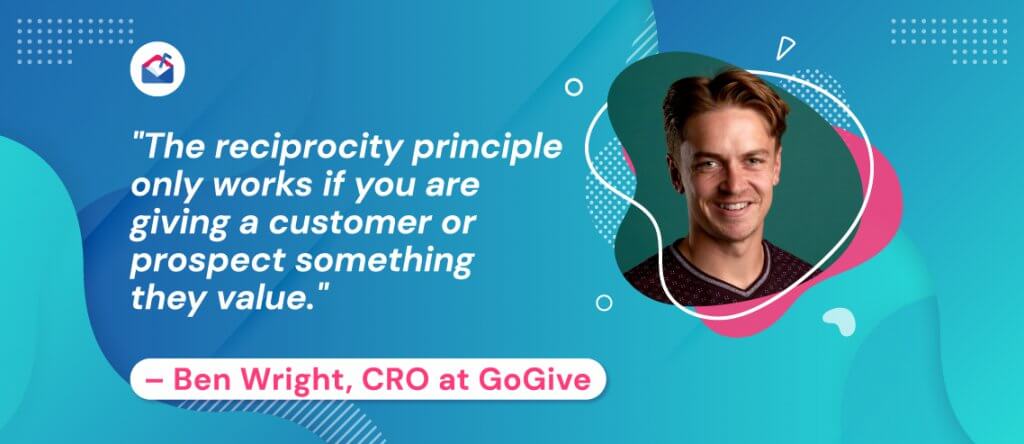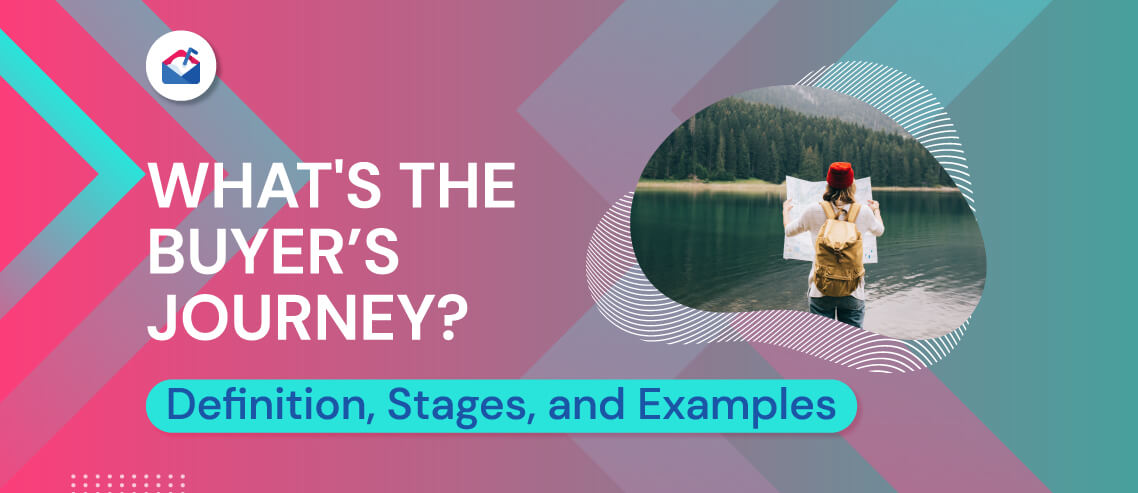The Psychology of Sales: How to Study Human Behavior to Grow Revenue

Contents
Think of all the sales you could make if you could read people’s minds.
Psychology plays a big part in buyers’ decisions, and if you can understand this decision-making process that goes into this, then it can give you a big advantage in sales.
You can’t read people’s minds, but you can use the psychology of sales to become a better salesperson.
What Is Sales Psychology?
We like to think of ourselves as logical creatures and to an extent we are, but lots of our decisions are also driven by emotions. When it comes to sales, it’s important to understand how the logical and emotional come together to influence buyer decisions.
Sales psychology studies the psyche of your target market to better understand how you can sell to them. Rather than focusing on convincing the customer they need your product or service, you zero in on their emotional needs by putting yourself in their shoes.
When you understand your target audience, and the driving forces behind their decision-making, then you can provide them with the service they’re looking for at each part of the sales process.
10 Psychological Triggers to Help You Win the Sale
Recognizing the psychology behind people’s purchases can be a big advantage in sales. It allows you to better predict what the customer needs from you, facilitating smoother relationships and better communication.
As always in sales, one of the first steps is understanding your audience, and these nine psychological triggers allow you to build on this knowledge.
1. Create a Meaningful Human Connection
We like to build relationships. No matter what we’re doing, we’d rather do it with someone we have a positive connection with and it’s no different in sales.
How many times have you been on the other end of a sales call, and you’ve just not gelled with the salesperson? If there is a chance of this person selling to you, then they’ll have to go a lot further than the person you instantly connect with.
Building a relationship based on trust is an important part of the sales process, and this doesn’t just go for individuals. Prospects also form a relationship with your business and its product.
This is why so much work goes into branding — because it creates positive connections. These positive connections make people more open to making a purchase.
2. Show Them that Their Peers Have It
Recommendations from family and friends are one of the most powerful selling factors out there. This is closely tied to human psychology, in which we have an innate need to like the same things as our peers.
We see this play out in sales and marketing all the time. Testimonials and reviews are a powerful tool and they give a lot of credibility to your business and its products (positive ones at least).
This idea is tied in with the common saying of “keeping up with the Joneses.” There’s a pull for us to want what others have based on the perception that if it’s good enough for them, then it’s good enough for me.
Influencer marketing is a method that uses this theory exceptionally well.
When we see “authoritative” influencers that we trust recommending products, they can have even greater power than recommendations from friends and family.
3. Prove You’re An Expert in Your Field
Why do most successful businesses put a lot of effort into their blogs?
Aside from the SEO benefits, it’s also one of the best ways to establish yourself and your business as an expert in your field. When people see you have the answers to their questions, it builds a great deal of trust.
Think about when you see an ad for a health product on the TV. How often do you hear something like “number one doctor recommended?” Authoritative figures carry a huge amount of weight in our decision-making process (take the Milgram Experiment, where participants administered shocks to patients who got questions wrong because someone in a lab coat told them to).
When we’re buying products, we don’t want to be taking risks with a salesperson or business that seems lacking in expertise. We want to trust in the authority of the people we’re dealing with.
4. Change the Way They Think About Their Problem
This is known as cognitive restructuring, but it’s not as complicated as its name might suggest. It’s simply a case of changing the way people think about the problem, and most salespeople do this on a regular basis.
For example, a marketing person might think that their main problem is that their cold emails aren’t getting responses. When you dig into the problem though, you realize that the main problem is that their emails have poor deliverability, and when they do get through, the subject lines aren’t drawing people’s attention.
Instead of a big problem where the customer has written off cold email as something that doesn’t work, you’ve turned it into two smaller problems that your product can fix.
Restructuring people’s pain points is an excellent way to use the psychology of sale to change the prospect’s thinking and show the value of your offerings.
5. Don’t Offer More; Offer Less
We live in a world where we increasingly expect personalization and bespoke products. The thing is, while we enjoy a certain level of choice, too many options can cause analysis paralysis.
When you look at most subscription services for things like software, take ours, for example, you’ll generally see two or three pricing options. This gives people control over their decision, but at the same time, doesn’t give them so many options as to result in analysis paralysis.
This is where it’s important to remember you’re the expert.
People know what they want/need to some extent, but your expert knowledge is there to guide them toward the right option. Too many choices and you make this job much more difficult.
6. Give Them Something First
The reciprocity principle is a powerful phenomenon in the psychology of sales. It states that if you do something for, or give something to a customer, they’re more likely to reciprocate and do something positive for you.
This is one of the reasons why people offer free tasters in supermarkets. Of course, they want to introduce you to their product, but they also recognize the powerful urge it gives you to reciprocate their good gesture.

Ben Wright, CRO at charitable gifting platform GoGive, adds, “The reciprocity principle only works if you are giving a customer or prospect something they value. Oftentimes, specifically as you start to target C-Level executives, physical gifts or monetary offers don’t land. In this instance, a donation to a charity or cause that they care about creates a bond between the salesperson and prospect that is hard to match. There is also a psychological aspect at play here — what’s easier to ignore, a $50 Amazon gift card or $50 to your local animal shelter?”
Giving your prospect something before you expect anything from them is a good way to build trust, and it makes it more likely they will reciprocate by giving you their business. Free trials, sneak peeks, free merchandise — there are lots of different ways you can incorporate this into your sales strategy.
Gifting platforms, such as Sendoso, Postal.io, Alyce, and GoGive, are great options here.
7. Create a Sense of Scarcity
This is one of the most commonly seen sales tactics today — creating a sense of scarcity.
FOMO, the fear of missing out, is such a powerful motivator that some ads even mention it explicitly (“don’t suffer from FOMO, get yours today”).
We like to push decisions down the line. We say to ourselves we’ll think about it and come back to it, and this is fine when there’s no sense of urgency. When that same decision is over a product that has a limited-time discount, then suddenly we’ve got to make a decision.
Our fear of missing out on that great discount, or the last item in stock drives us to make decisions, and it results in more sales.
How you create a sense of scarcity is up to you, but it can be a powerful way to grow revenue.
8. Leave Some Mystery
What’s a more powerful learning experience: someone telling you how to do something, or figuring out how to do it yourself? For many people, learning by doing something themselves has a more long-lasting effect.
Sales can be very similar. You can tell someone all the benefits of your products, but it’s just not the same as them experiencing the benefits for themselves.
This is why in the psychology of sales, it sometimes pays to leave some mystery.
For example, if you’ve got a piece of software, and the customer asks you to walk you through the benefits, it can be useful to say “no, let me set you up with a trial and you’ll see for yourself.” As long as you’re providing them with the onboarding and support they need, this can be more effective than simply telling them.
This can be an effective tactic if you’ve got a lot of confidence in the product and you’re able to guide people through the process. This way you leave a little bit of mystery out there and let your product do the talking.
9. Stay Top of Mind
Being top of mind is a huge advantage.
If you’re the first person someone thinks of when they decide it’s time to buy, then this puts you in a great place to make the sale. How do you stay at the top of people’s minds though?
This is where your brand can play a big part.
The more consumers are exposed to your brand (in a positive way), the more it can drive desire. It’s a bit like when you keep seeing an ad for a cold beverage on a hot day. You may not associate your desire for a Coca-Cola with the ads, but the sheer exposure to the brand likely played a part in your decision-making.
By maintaining an omnichannel approach and building your brand it can help you to stay top of mind and make more sales.
10. Anchoring
Present a higher-priced option first to make subsequent options seem more reasonable and affordable in comparison. This can influence customers to choose a higher-priced option than they might have otherwise considered.
Required Reading On the Psychology of Sales
A great way to better understand the psychology of sales is by reading. There are lots of good books on the subject, and these three can help make you a better salesperson.
The Psychology of Selling by Brian Tracy
Brian Tracy is a hugely successful author and motivational speaker and his book, “The Psychology of Selling” is an excellent guide. The nice thing about this book is that it’s much more than just theory, it gives you actionable strategies you can use to improve your performance today.
The Psychology of Selling is considered a must-read for any salesperson, and may just change the way you approach sales. By helping you to understand human behavior, it gives you the potential to make more sales and grow your revenue.
Influence by Robert Cialdini
In his book, “Influence,” Robert Cialdini breaks down the seven key principles of the psychology of sales:
- Reciprocity
- Commitment
- Liking
- Authority
- Social
- Scarcity
- Unity
These guides give you a good framework with which to understand the psychology of sales. From here, you can better see where your current sales strategies might be going wrong and where you can improve your performance.
Cialdini then puts his ideas together in a sales context so you can see exactly how psychology affects your work.
To Sell is Human by Daniel Pink
“To Sell is Human” by Daniel Pink leads you to a stark realization – we’re all salespeople. Some of us might be your classic salespeople by trade, pitching customers with our products or services, but we’re all salespeople in our day-to-day lives.
We use these psychological tricks to get what we want all the time. Pink uses this knowledge of social science to offer some brilliant insights and show you how you can use the psychology of sales.
It’s a great read and one that can make a big difference to your sales.
Conclusion
Psychology plays a part in every decision humans make.
If your job is to convince people, which naturally you’re trying to do as a salesperson, then you want to understand how people make their decisions. With these nine psychological triggers, you can do exactly that, earning more sales and growing revenue for your business.
We may like to think that we’re purely rational beings, but the psychology of sales plays a big part in consumer decisions, and this is something you can use to become a better salesperson.





